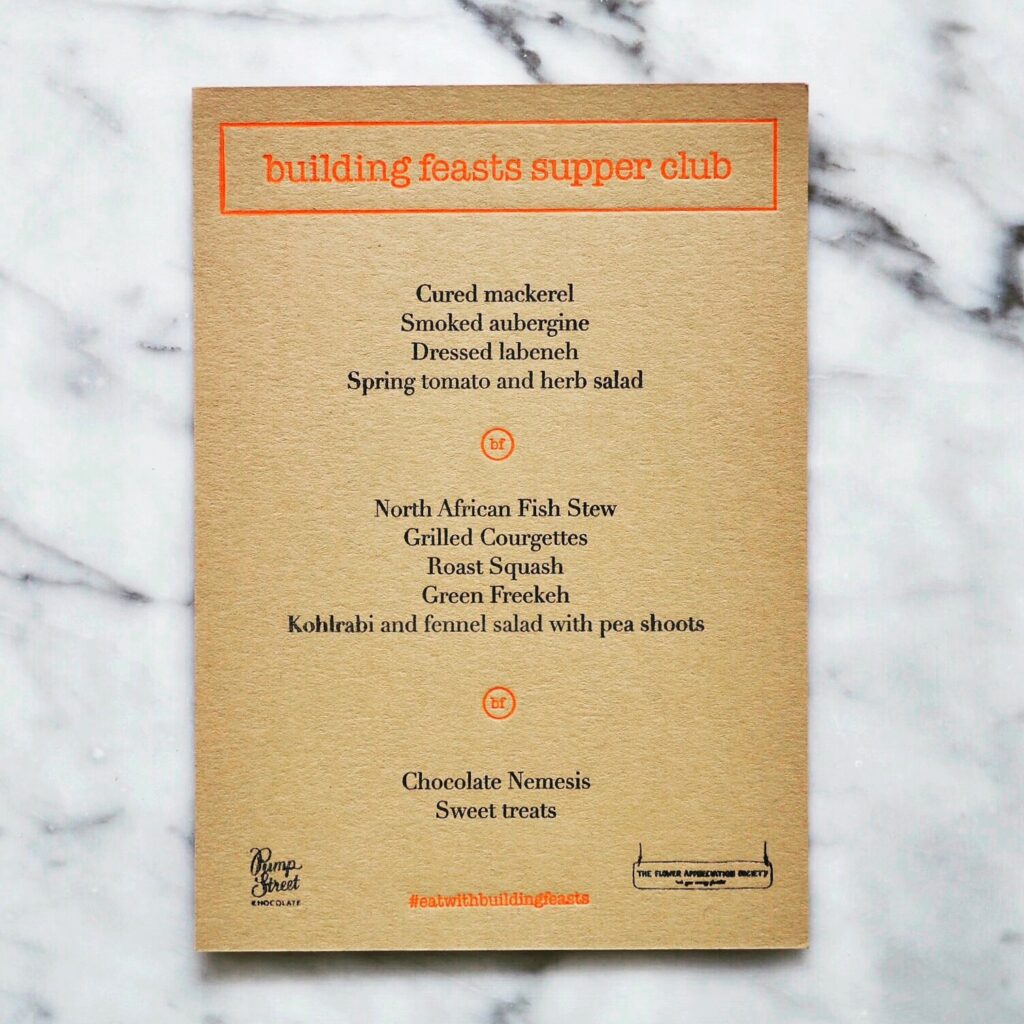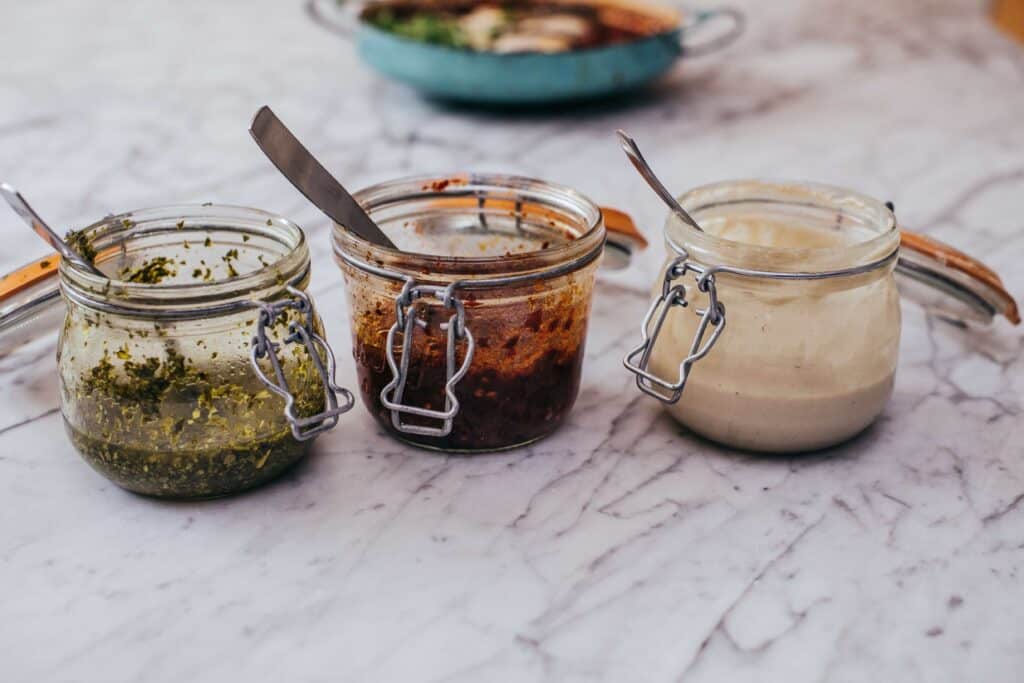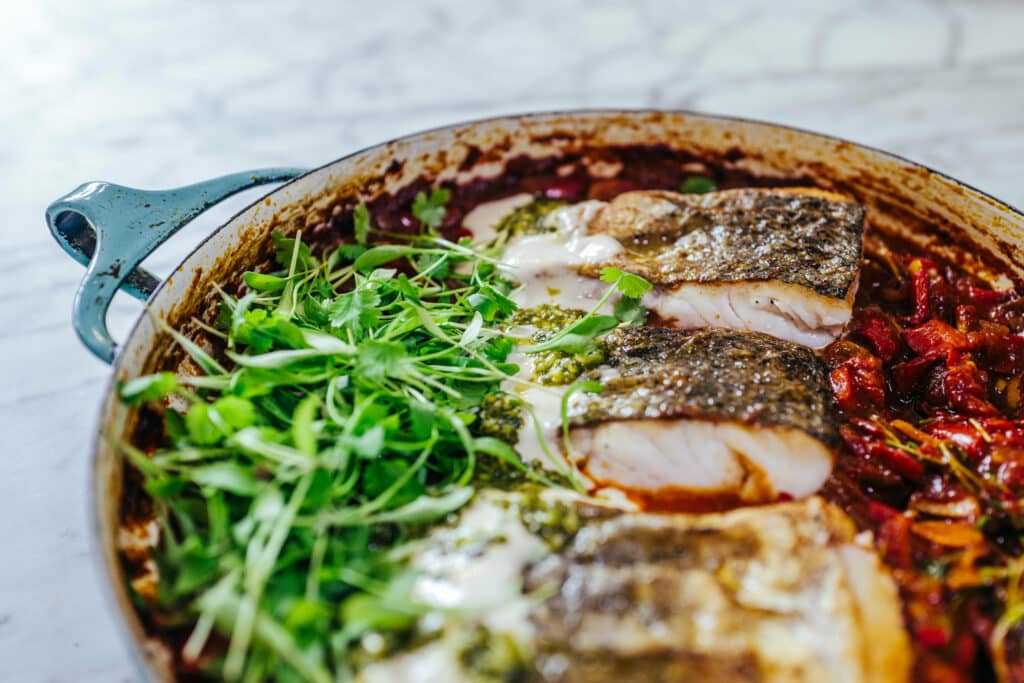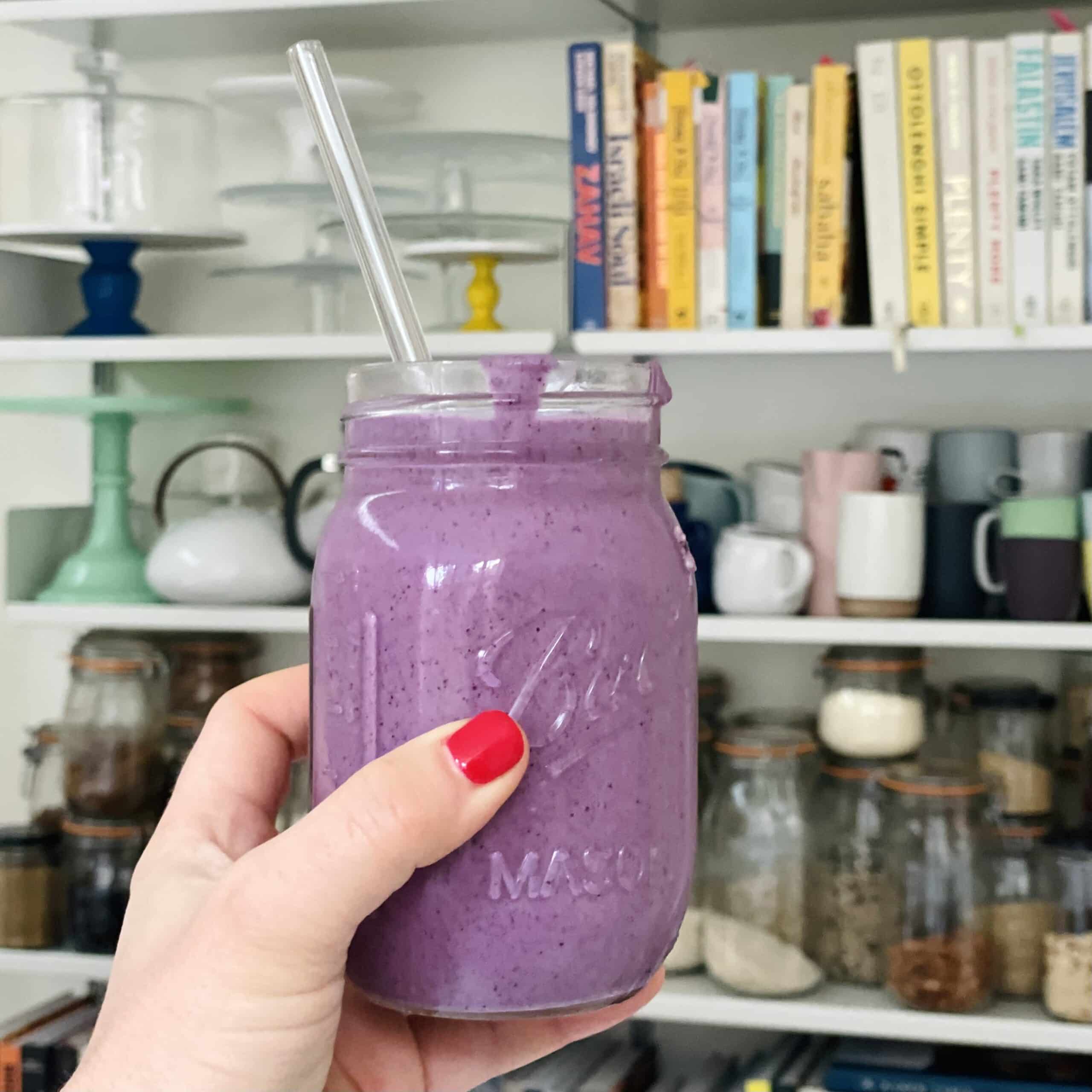I first ate this many years ago at my friend’s Moroccan grandmother’s house just outside Jerusalem. But really, Israeli chef Eyal Shani — the man known for flooding Tel Aviv with some of its finest eating establishments — is the man to thank for my true love of the Chraymeh. Without fail, this spicy, tomatoey deliciousness, drizzled with tahini and mopped up with thick toasted sourdough takes pride of place at most of Shani’s houses.
Traditionally found throughout the North African Jewish communities with each region claiming its own superior version, this is now firmly one of the Israeli national dishes. A regular feature at a traditional Sabbath meal as the fish starter course, Chraymeh can be either more soup than stew, chunky or smooth, with or without peppers and with varying degrees of heat, mainly depending on the family’s recipe heritage.
Luckily, with the opening of The Palomar in London, I have a local venue for my spicy fish fix. But in reality it is simple to make, and like many of the recipes that I love, the sauce can be cooked in advance and warmed through before adding the fish for the final stage of cooking. As easy for a Friday night crowd as for the emergency mid week meal, this Chraymeh fish stew is packed with personality.
I developed this version of the recipe as the main course for our First Supper Club last year. The theme of the evening was food from the Levant, and Chraymeh Fish — called North African Fish Stew on our menu card — ticked all the boxes for a sharing dish that we could serve a crowd. Borrowing proportions, spice combinations and techniques from the greats including Ottolenghi, Michael Solomonov, The Palomar team, Claudia Roden and Joyce Goldstein, we came up with this slightly doctored version of them all.
I like to make this with hake fillets, but any white fish works well. Mike Solomonov uses a whole red snapper. Abraxas (the original Sheni restaurant) makes it with a fish steak, while Palomar use skinned cod fillets that break into pieces as they cook. Personally I like to sear the seasoned hake fillets skin side down, and then turn them over flesh side down into a shallow pan containing the sauce where they can finish cooking and absorb the flavours while retaining a crisp skin.
I prefer a chunkier sauce always, so I keep my peppers and onions chopped, not diced, If you prefer a smoother sauce, chop the vegetables and chillies finely and use passata instead of chopped tomatoes.
This is often served with a drizzle of tahini sauce and the dream duo of hot sauces, harissa and Yemenite schug (and don’t be ashamed of shop bought). Just don’t forget plenty of crusty sourdough or fresh pita to mop up all the juice.


For the Sauce
- 2 tsp cumin seeds
- 2 tbsp olive oil
- 3 red onions, chopped or thinly sliced into half moons depending on your mood
- 2-3 red chillies, sliced (depending on how hot you like it)
- 4 Romano red peppers (or regular red peppers if not available)
- 10 garlic cloves
- 2 tsp Aleppo pepper flakes* (or 1/2 tsp pepper flakes)
- 2 tsp sweet paprika
- 100ml water
- 200ml Pernod or aniseed flavoured spirit (optional) or use equivalent of water
- 2 tsp harissa paste
- 800g (2 tins) chopped tomatoes
- Salt and pepper
- Good pinch of sugar
For the Fish
- 6 hake fillets with skin, approximately 150g each (or any quite fish equivalent of your choice. If you are using skinned fillets, just season them and drop them into the sauce to cook)
- 1 tbsp olive oil
- A large bunch of coriander, chopped (or parsley if you prefer)
- A good squeeze of lemon juice
Toast the cumin seeds in a dry pan on a medium heat until lightly toasted and fragrant (only a minute or two). Crush in a mortar and pestle or with a rolling pin.
Heat the olive oil gently in a large saute pan. Add the chopped or sliced onions and cook for a few minutes until beginning to be translucent. Add the chilies and peppers and cook for 15-20 minutes until soft, stirring occasionally.
Add the garlic, cumin, Aleppo pepper flakes and paprika and cook another 5 minutes or so until fragrant. Don’t forget to stir.
Pour in the water and Pernod (if using) and allow the alcohol to evaporate on a high heat before turning it back down and stirring through the harissa.
Add the tomatoes a pinch of sugar and a healthy dose of salt and pepper and simmer for 15-20 minutes until rich and thickened slightly. Add half of the chopped coriander and allow it to wilt into the sauce.
(If you are making the sauce in advance, turn off the heat when the tomatoes have cooked down and the sauce has come together. You can now reheat this whenever you are ready to cook the fish, just before serving).
When the sauce is bubbling and ready, add half of the chopped coriander and sear the hake, if using fillets with skin.
Season the fish fillets with salt and pepper and a drizzle of olive oil. Heat a frying pan on a high heat with a little olive oil to coat the bottom. Add the fillets to the pan, skin side down, and cook until crispy, 2-3 minutes. Take the fish out of the frying pan and flip over so it is flesh side down into all the tomatoey goodness. Cook on a low to medium heat until the fish is cooked through (about 3-4 more minutes). If you are using skinned fillets, gently lower them into the sauce and simmer for 5 minutes.
Add a good squeeze of lemon juice and sprinkle over the remaining fresh herbs.
I serve this straight out of the pan with a good drizzle of tahini and any additional hot sauces required, mopped up with lots of bread or grain of choice.
*If you don’t have Aleppo pepper flakes in your spice armoury, you need them. I literally sprinkle them on everything from chicken to sauteed and roasted vegetables to dressings.
The quantity of sauce here serves 6. I would advise making all the sauce at once, even if you are only making it for one. It will keep in the fridge for 5 days or frozen for 3 months, and can be used with eggs, pulses or roasted roots such as pumpkin and greens for a veggie option.
Have you made this dish?
Let me know what you think, share your efforts and any tweaks you made to the recipe on Instagram, don’t forget to tag #BuildingFeasts or email me on info@buildingfeasts.com




